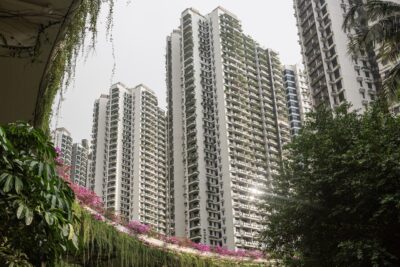Is there still a future in golf for Vietnam?

In the 1930s, Vietnam’s newly anointed teenage emperor had returned home from France and laid out his vision for reform.
Bao Dai had spent his youth living a decadent life cultivating his passions and refining his tastes in the pursuit of life as a European, and upon returning, wanted to bring a slice of the west with him. And so it was that he built a golf course. Having learnt to play and love the sport so much during his travels, he built a six-hole course in Dalat, and for a while it was enjoyed by fellow Europhiles and aristocrats.
But when war broke out and communism began to sweep the country, the image of Vietnamese indulging in the sport of their recently departed colonial masters didn’t sit so well with authorities, and they banned it.
It wasn’t until the 1990s that Vietnam was allowed to catch up. As the economy opened to foreign investment, the sport was revived.
Vietnam is now considered one of the best golfing destinations in the world, with some of the sport’s most distinguished players and designers scrambling to make their mark as luxury resorts with integrated casinos draw huge investment.
“Golf is a global language and Vietnam has seen tremendous continuous growth over the past decade,” says Australian golf legend Greg Norman, who was recently appointed an ambassador for Vietnamese tourism.
“Vietnam has the potential to reach new heights, attract new tourism and direct foreign investment, and with the support of the government, grow the next generation of Vietnamese golfers to support a sustainable long-term plan for the country,” adds Norman, whose design work includes the Bluffs Ho Tram Strip, KN Golf Links-Cam Ranh and BRG Danang Golf Resort.
It’s on the coast between Hoi An and Hue where much of the golfing action is taking place.
Ba Na Hills Golf Club won the coveted distinction of the best new golf course in the world in 2016. Other highlights include Laguna Lang Co, an 18-hole, par-71 championship course designed by Sir Nick Faldo, and the under-construction Hoiana Shores.
More: Vietnam industrial property market to see positive outlook
Robert Bicknell, a professional golfer who has managed many of the top courses in Vietnam, says that for a long time it was mainly small foreign companies using Vietnamese partners that were investing in golf courses and resorts. Now, however, trends are changing, with Vietnamese property companies moving aggressively to buy many of the smaller clubs up for sale.
Adam Bury, a senior vice president at real estate investment firm Jones Lang LaSalle, believes golf is helping transform Vietnam’s image as a tourist destination. “Vietnam is shedding its image as a destination which tourists only visit once, with the food scene, golf and casinos being just some of the reasons for repeat visits,” he says, adding, “the investments made in infrastructure and transport has opened up an array of coastal destinations beyond the long-standing hotspots of Danang-Hoi An and Nha Trang-Cam Ranh for investors to target.”
Golf courses have also given rise to a super-luxury property sector, with villas either integrated in the resort or positioned nearby selling from between USD700,000 to USD2 million. Danang has become the most popular spot for investments in such properties, with locals making up more than two-thirds of purchases in recent developments.
At the Four Seasons Nam Hai near Hoi An a one-bedroom villa with a pool costs about USD850,000. Beachfront villas at Ho Tram, which have access to an infinity pool and barbecue facilities, start from USD790,000, while at the Banyan Tree resort in Lang Co, a three-bedroom villa sells for about USD1.28 million.
However, the speed at which investment is flowing into developing the sport has raised some uncomfortable truths, with questions lingering over whether developers have got ahead of themselves.
Golf remains an unaffordable luxury for the vast majority of locals, for whom the average monthly salary would scarcely cover the cost of a set of basic golf clubs.
Bicknell echoes the looming threat of an oversupply of clubs. “It seems each new project raises the bar even higher. It’s a good thing, but the biggest problem is that too much of a good thing can kill the industry. Look at the U.S.—dying from too many clubs and not enough new players,” he points out, adding that a combination tax of 30 percent applied to playing fees makes Vietnam an expensive golfing destination compared to somewhere like Thailand.
Vietnam is shedding its image as a destination which tourists only visit once, with the food scene, golf and casinos being just some of the reasons for repeat visits
Tim Shepherd, director of Fortuna Investments, which is currently developing a hotel and gaming club in Northern Vietnam, says it was common in the 1990s in Asia to pair a golf course with a casino in the early stages of a resort’s development. But the reality later hit when most of the gamblers were clearly more content to stay at the tables than go for the greens.

“[Golf courses] have proven to be expensive luxuries for casino developers nowadays and I don’t see that changing in Vietnam,” says Shepherd.
Shepherd says developers should look at Macau where few of the hordes of VIPs that throng the casinos venture out for a game on the resorts’ golf courses—and that “says it all.”
Perhaps a boost in both golf and gaming operations will come after the state relaxed the laws around locals gambling, which took effect mid last year. The pilot program, launched at a select few casinos with nearby golf courses, limits play to wealthy Vietnamese. The scheme is still in its infancy, but developers will be watching keenly to see whether local gamblers show a passion for the sport.
Until then, and as Vietnam’s golf business shows no signs of slowing down, new investors would do well to remind themselves of the old axiom, Shepherd advises. “Most golfers gamble, but not all gamblers are golfers.”
his article originally appeared in Issue No. 152 of PropertyGuru Property Report Magazine.
Recommended
Meet the vagabond architect behind India’s housing scene
Vinu Daniel is helping to shake up India’s home building setting
Where Asian real estate stands in a fragmented, warmer world
Asia’s real estate industry faces many and varied challenges as external factors continue to bite
6 sights to see in Singapore’s Marine Parade
Handily located Marine Parade has emerged as a vibrant investment choice in the Lion City
There’s a township dedicated to health and wellness in Malaysia
Property seekers have their health needs catered for at KL Wellness City








